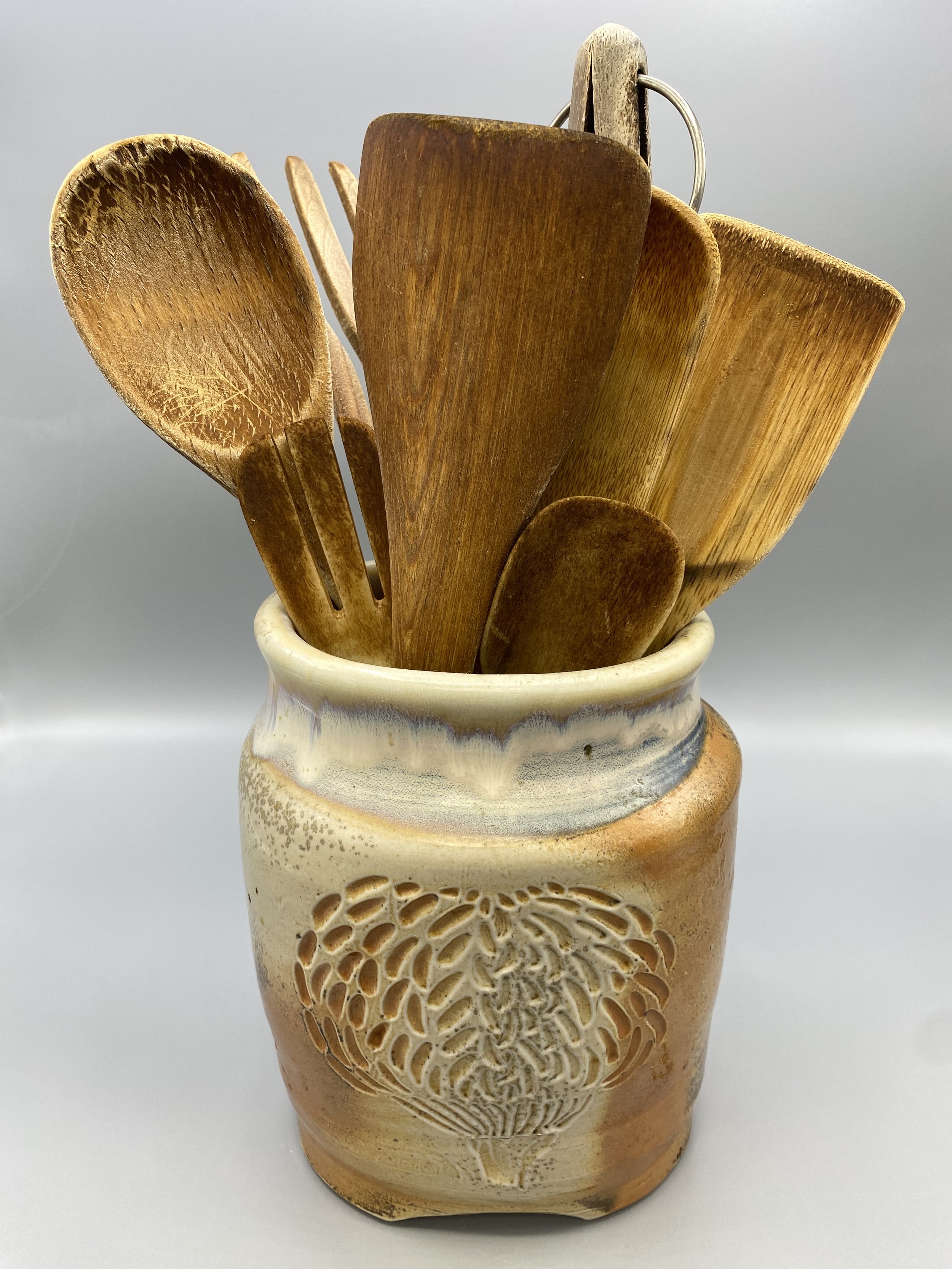
The ceramic wood-firing process of “Penelope”, a Thai-style Anagama kiln
Wood firing means using wood as the fuel source to heat a pottery kiln. The wood ash produces unique glaze effects, from runs, to crystal formation, to color changes. Look for asymmetry on the surface of these pieces. Those effects-- which are largely out of the potter’s control—are, to us, worth the effort it takes to fire this way. It also honors an ancient practice that began over 20 thousand years ago.
Along with Jesse Bay, an experienced potter and builder, we built a wood-fired anagama kiln on Lopez Island over three years. I named the kiln Penelope, after my tough, long-lived and prolific forbear. (https://en.wikipedia.org/wiki/Penelope_Stout)
She has been fired 18 times since 2004. Each firing requires continuous stoking of about four cords of wood for almost two days. This in turn requires a community, and we have a really nice one. We all contribute time to find, gather, split and stack the wood, in exchange for kiln space. And we eat well.
I love the wood fire process and aesthetic, and the community that comes together to pull this off. The main theme to my work is an emphasis on functional ware, although I also make large urns and outdoor installations from time to time.
A wonderful discovery is the firing property of alder wood, which is native to the rainy northwest coast, and often considered a weed tree. But it’s not! At temperatures above 2,000 F, the chemicals in alder ash combine with the sticky clay body to produce brilliant glaze effects. A (renewable) alder grove now grows on our Lopez property, in preparation for future firings.
















